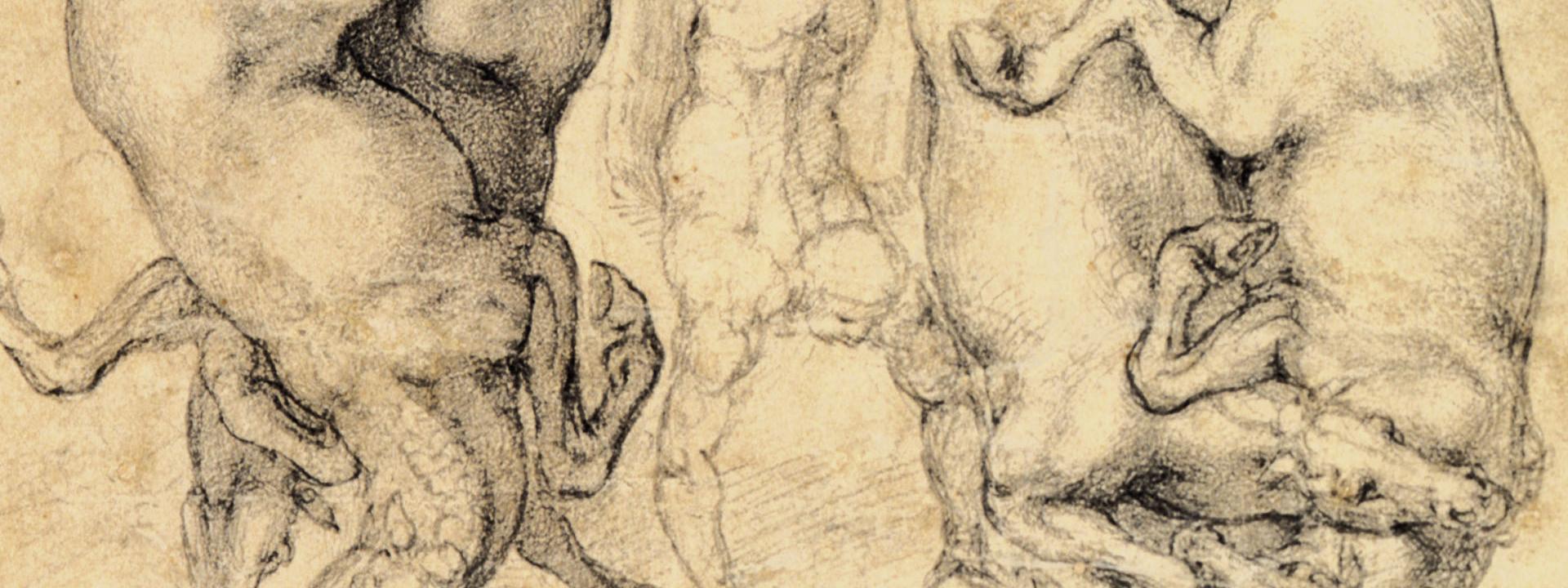DISPLAY AND CONSERVATION
To avoid deterioration, the drawing must be conserved in a light- and temperature-controlled environment. For this reason, drawings and prints are not always on permanent display.
THE FALL OF PHAETON
This is one of three versions of The Fall of Phaeton, most probably chronologically the second after the version in the British Museum and before that of the Royal Collection in Windsor. This version was undertaken by Michelangelo Buonarroti in 1533 (a less certain hypothesis places it in the 1520s) for his friend Tommaso de’ Cavalieri, and gained popularity because it was often reproduced in various engravings. The cycle of the mythological subject became a multi-part study demonstrating an executionary process offering different solutions. Michelangelo sent his sketches to his friend along with handwritten notes asking him for his approval. Once he was given approval, Michelangelo probably executed the drawing now held in Windsor, which is larger and incomprably more graphically refined than the others. The Fall of Phaeton depicts the mythological episode taken from Ovid’s Metamorphoses, and particuarly the end of Phaeton’s life. Zeus, seen frontally and almost touching the cart with his foot, is launching a thunderbolt at proud Phaeton, who had dared ascend towards the heavens. The young Phaeton plummets downwards along with his sun charriot and horses, clasped together in pairs. Despite the fall, the depiction of Phaeton does not interfere with the position of the steeds, if not in his hands. The drawing alligns Zeus and Phaeton along the same vertical axis, with Eridanos, or the Po river, specularly represented beneath ready to break his fall. Below, alongside Eridanos, we have Cygnus and the three Heliades, respectively Phaeton’s friend and sisters. The drawing presents three distinct parts of the narrative: above we have the cause, in the centre the effect, and below the consequences. The fall of Phaeton is the symbol of destiny and also suggests an autobiographical reference to Michelangelo’s love for Cavalieri. Zeus throwing a thunderbolt is considered a foreshadowing of Christ in judgment in the Sistine Chapel fresco. The figures sketched on the back, which were discovered when the backing sheets were removed, might be ideas for Phaeton or the first of the Heliades on the right. The sheet also contains an abrased and barely legible handwritten note, “Io retracto el meglio ch[e] o saputo io pero ui rimando il uostro perché ne son[?] seruo uostro che lo ritraga un altra volta” (I drew this as well as I could but I send it back to you as I am your servant that I may draw it once again). Considering the different type of stroke, the group on the ground seems to have been executed later, probably closer to the conception of the Last Judgment.


